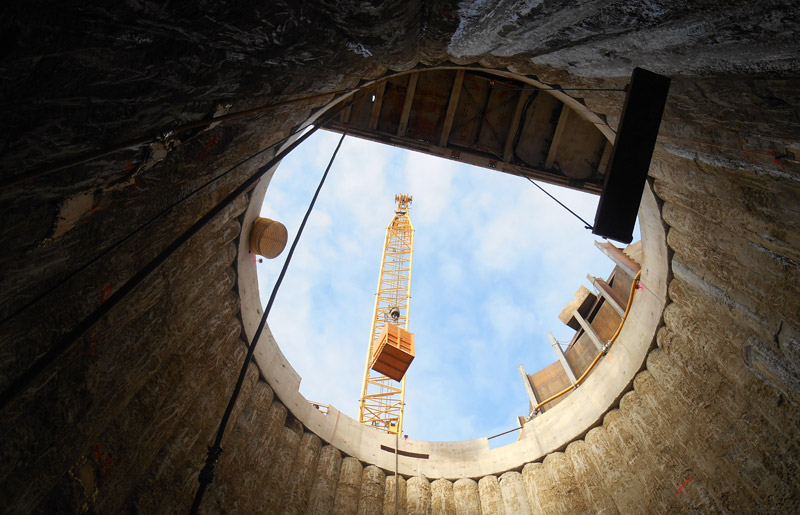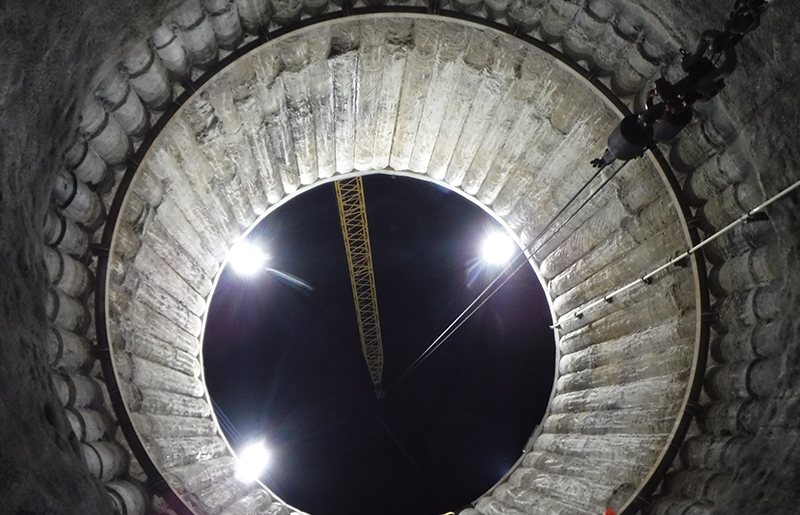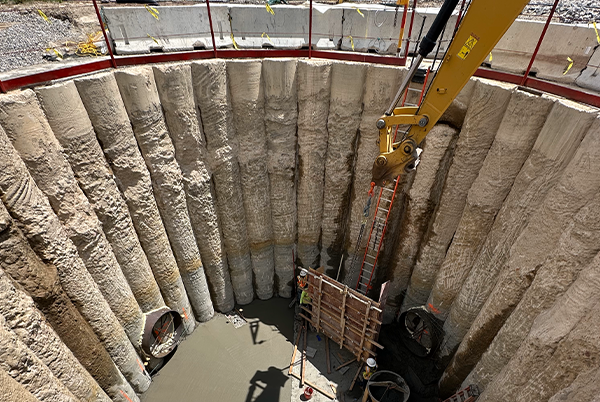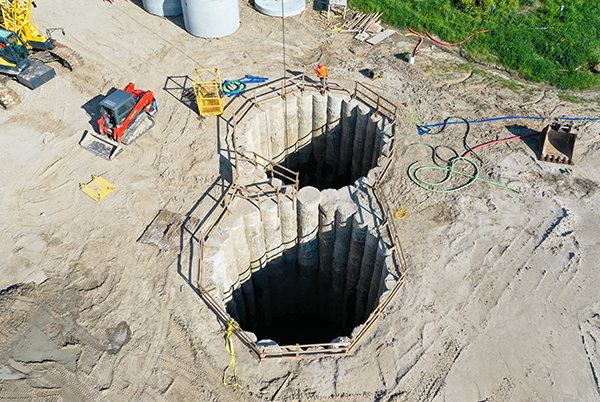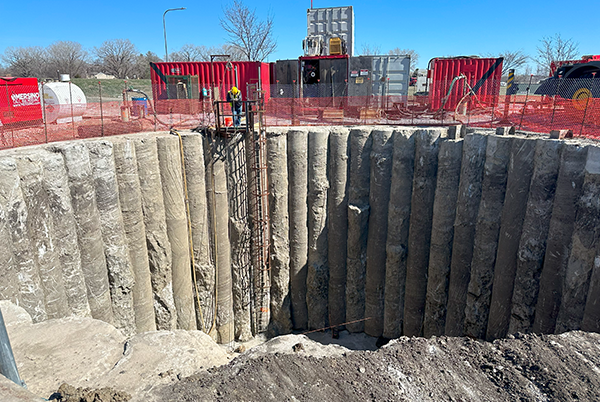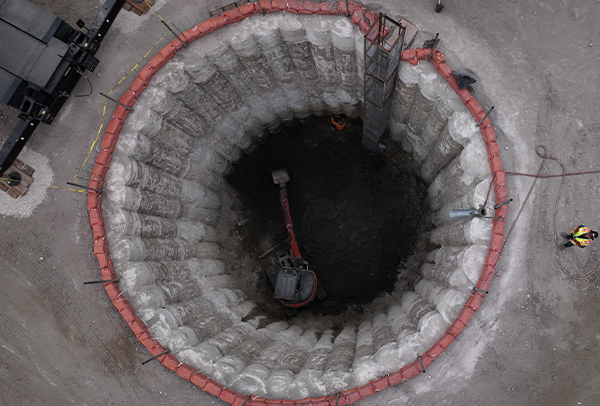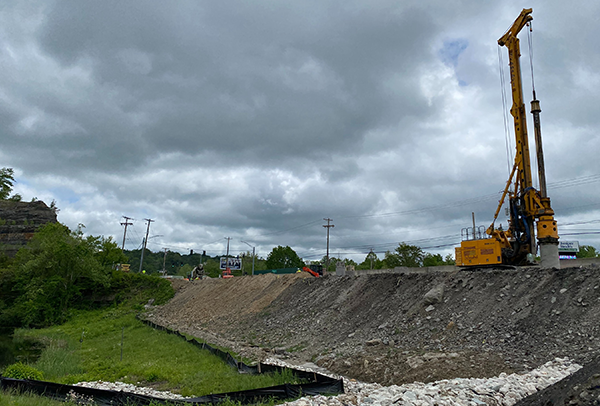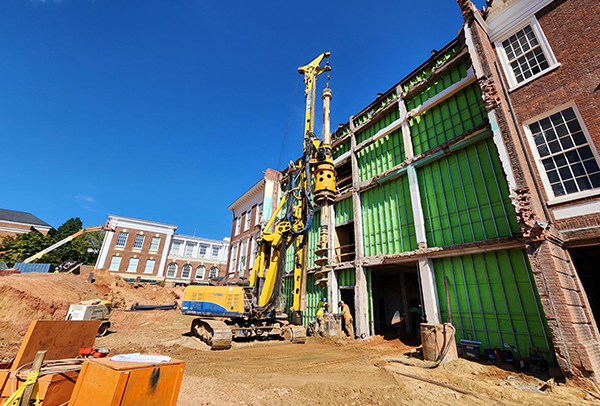Secant Piles
A nationwide design-build company, Schnabel constructs reliable, structurally sound secant pile walls that provide effective both excavation support and groundwater barriers for excavations.
Secant pile walls use very stiff, overlapping shafts that form a continuous concrete wall. Secant pile shafts are drilled using specialty drills which can maintain the critical alignment that is required for the secant pile wall to be effective. The shafts are typically 2 to 4-foot in diameter. Tangent piles are similar to secant piles except the shafts touch but do not overlap.
With decades of experience providing tailored earth- and water-retention solutions, Schnabel has the expertise to provide secant walls that help you meet your most difficult construction goals.
SECANT PILE WALL SOLUTIONS
Secant piles are part of a rigid, robust system that combines earth retention and groundwater cut-off walls. Secant pile walls are constructed by drilling in a series of alternating primary (drilled first) and secondary (drilled second) overlapping shafts to form a continuous secant wall. The concrete in the shafts can be all low-strength, all high-strength, or a combination of low-strength primary and high-strength secondary shafts. Steel piles or reinforcing steel are typically placed in the secondary shafts. Unreinforced high-strength shafts can also be constructed in a self-supporting circular ring, such as those frequently used for access shafts to tunnels.
Secant pile walls are relatively impermeable and can be used to control the flow of groundwater into an excavation and limit draw down outside the excavation. Secant walls are also very stiff and are often used when there are sensitive structures behind the wall.
An advantage of using secant piles for cutoff wall construction is the ability of Schnabel’s high torque drill rigs to penetrate hard-drilling conditions while simultaneously casing the drill hole. These drills can advance a cased hole through man-made and natural obstructions including cobbles, boulders, and reinforced concrete.
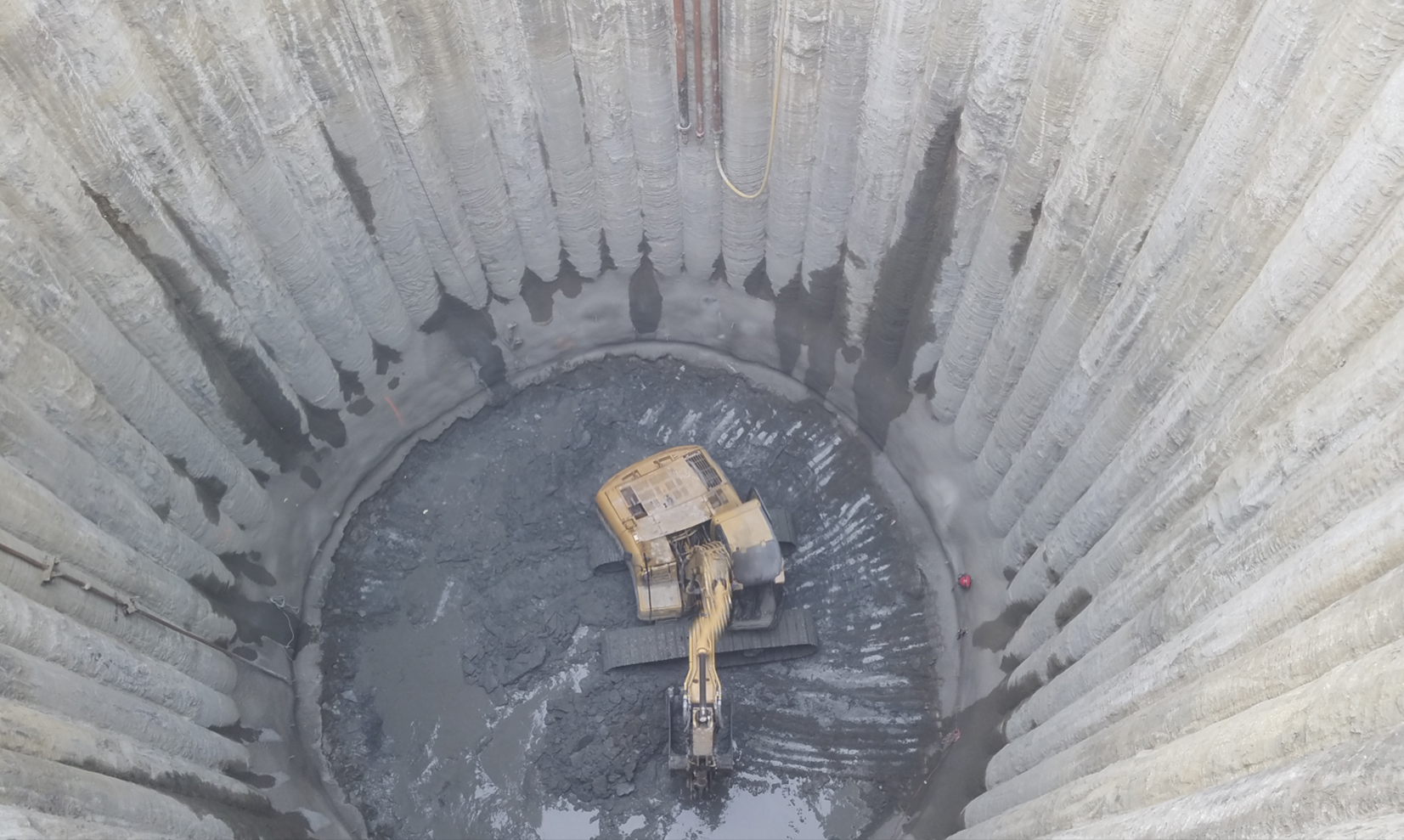
When difficult drilling conditions are anticipated, secant piles can be a very economical method for cutoff wall construction. Another benefit is the relatively low cost of mobilization when compared to other cutoff wall types such as slurry walls and soil mix walls. To learn more about whether a secant wall is the right solution for your project, contact one of Schnabel’s eight regional offices today.
Always innovating new approaches to better solve old problems.
SECANT PILE WALL CASE STUDIES
Rondout West Branch Bypass Tunnel Shaft | Wappinger Falls, NY
Schnabel was contracted to install secant piles in a self-supporting circular ring. This was a crucial step in helping construct a new bypass tunnel to let water flow under the Hudson River to New York City. The need for this tunnel arose due to the detection of leaks in an older tunnel. The secant piles installed reached a depth of about 87 feet. They went through fill, dense sands and gravel, and were anchored into a shale bedrock layer that was 15 to 20 feet deep.
Ohio River Tunnel Project | Louisville, KY
Schnabel designed and installed a series of overlapping, unreinforced secant piles in a circular ring pattern to facilitate the construction of a launch shaft, pump station, and retrieval shaft for the ORT project. The installed secant piles delved to a maximum depth of 113 feet, penetrating the underlying bedrock composed of dolomitic limestone.
In 31 years of building deep foundation projects for Schnabel, building a 90’ deep reinforced circular shaft was one that was very challenging and deeply rewarding. Looking forward to working on the next one with our client Schiavone.
